Brussels is the capital and largest city in Belgium, a small country in the heart of Europe.
This central location has resulted in Brussels being the de facto capital of the European Union, which means a lot of European institutions are located in the city.
The history of Brussels dates back to at least the 6th century when a small chapel was built on an island of the River Senne in a relatively swampy area.
That’s also the origin of the city’s name, “Broekzele,” which translates from Old Dutch to “home in the marsh.”
The founding of the city happened somewhere in the 10th century and the city’s first fortified structure was built on that same island as well.
The city gradually grew during the Middle Ages to become one of the most powerful cities in Europe in the 17th century, especially as the center of the lace industry.
The city was heavily damaged in 1695 during the so-called “Bombardment of Brussels” by King Louis IVX of France, a tragic episode during the Nine Years’ War (1688-1697). Many of the most famous landmarks in Brussels were rebuilt during this devastating event.
Today, this bilingual city (Dutch and French) has grown to a metropolis of over 1.2 million inhabitants within its boundaries (2.5 million in the metropolitan area)
In this article, you can discover the most famous buildings in Brussels so you can add these architectural marvels to your bucket list when visiting this city.
1. Grand Place
Grand Place is the most important square in the city. It’s located right in the historical heart of the city and is surrounded by highly decorative guildhalls dating back to the Baroque period.
Most of the buildings on the square were destroyed during the “Bombardment of Brussels” in the year 1695 and rebuilt shortly after, except for the Town Hall.
The yearly flower carpet definitely turns it into one of the most beautiful squares in Europe as well.
The central public space in Belgium’s capital is the perfect place to start your journey in Brussels!
Official website: Grand Place Brussels

2. Atomium
The Atomium isn’t just one of the most famous buildings in Brussels, it can easily be considered one of the most fascinating landmarks in the world.
It was originally constructed for the 1958 Brussels World’s Fair and has dominated the city’s skyline ever since.
It’s located on the Heysel Plateau where the World Fair took place. This is in the borough of Laeken in the northern part of the city.
The structure stands 102 meters (335 feet) tall and features 9 steel-clad spheres which each have a diameter of 18 meters (59 feet). Multiple of these can be visited as well.
Official website: Atomium
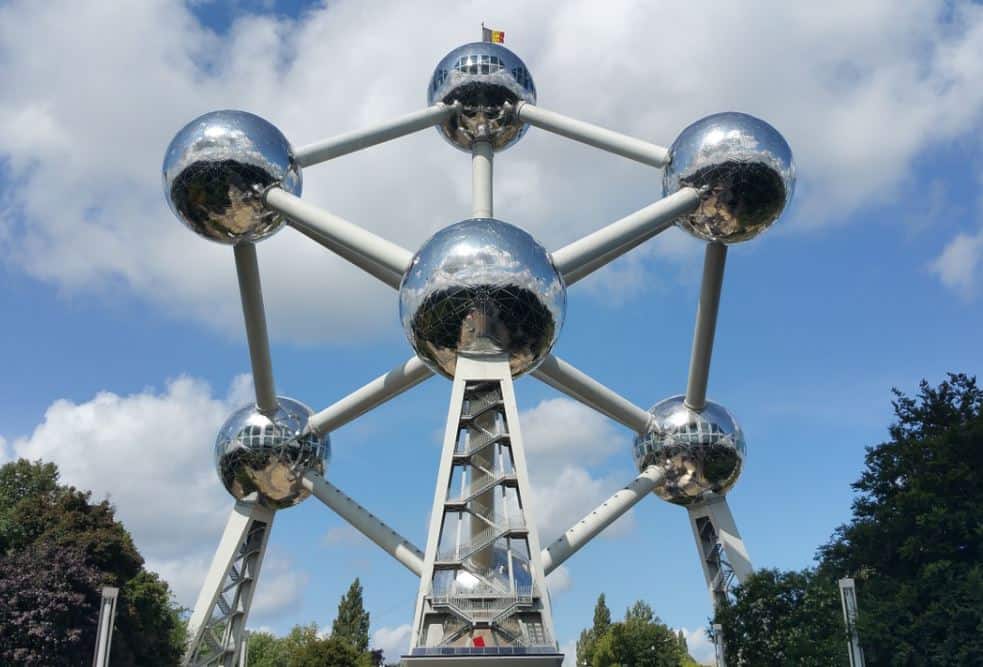
3. Manneken Pis
Manneken Pis is the most iconic monument in the city, located right in the center of Brussels at just a 5-minute walk from Grand Place.
This bronze sculpture stands 61 centimeters (24 inches) and depicts a naked little boy urinating.
The statue here is a replica put in place in 1965 which replaces the original version which was put in place around 1618-1619.
The original version of this iconic sculpture can now be admired in the Brussels City Museum.
Official website: Manneken Pis
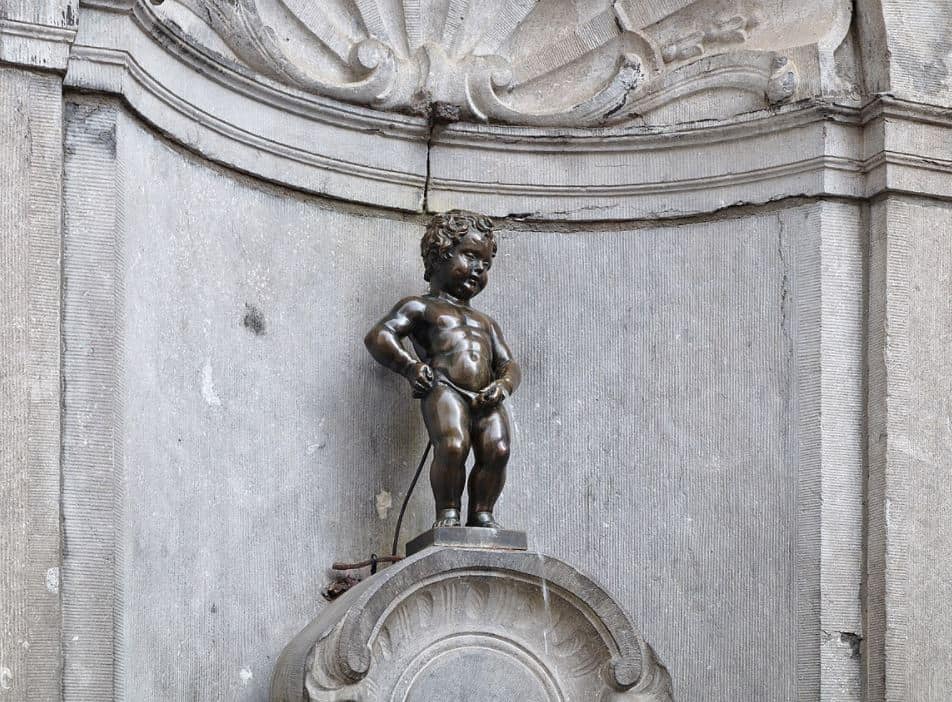
4. Town Hall
The Brussels Town Hall is the most fascinating building on Grand Place, and it’s not only because of its incredible spire
The structure reaches a height of 96 meters (315 feet) and its spire was completed in the year 1451.
It’s the only building that survived the 1695 Bombardement of Brussels by the French and is considered to be one of the most amazing examples of medieval Gothic architecture.
Most of the building was completed in the 15th century which means it’s one of the most fascinating attractions to visit in Brussels.
Official website: Brussels City Hall

5. Brussels City Museum
The Brussels City Museum is the place where you can admire the original Manneken Pis sculpture and the entire history of the city of Brussels.
It’s located within the other prominent building on Grand Place, the so-called “King’s House” or “Bread House.”
The original 15th-century building, on the other hand, was rebuilt following its destruction in the late 17th century.
It was completely restored in the 19th century in the neo-Gothic architectural style and the museum opened its doors in 1887.
Official website: Brussels City Museum
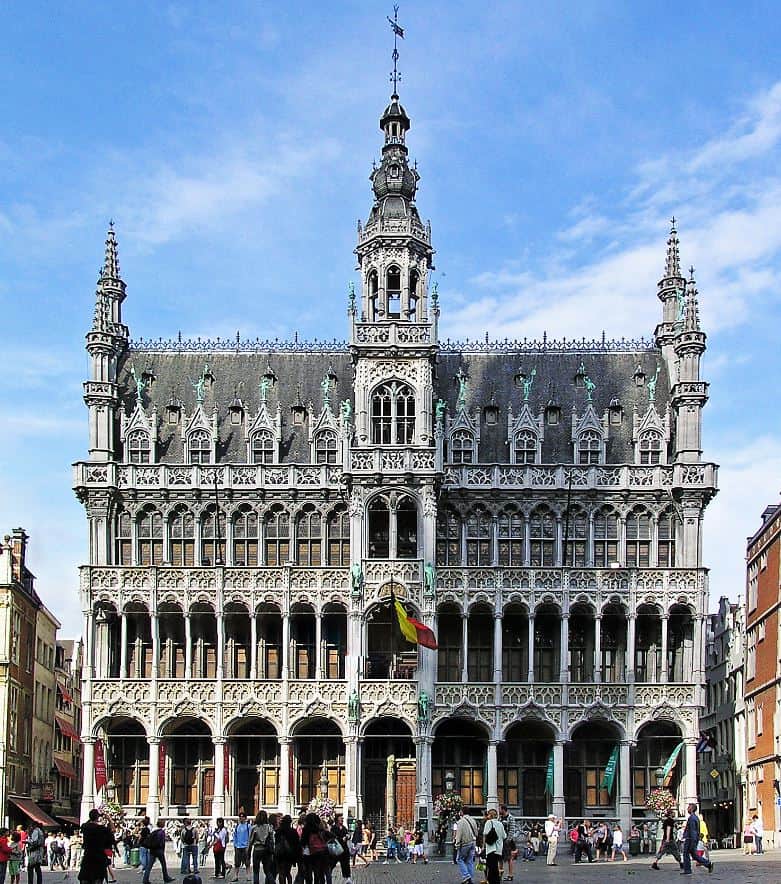
6. Royal Palace of Brussels
The Royal Palace of Brussels is the official palace of the King and Queen of Belgium and is located right in the heart of the city just walking distance to the southeast of Grand Place.
The fabulous palace is situated in a green area right in front of “Brussels Park” or “Warandepark,” the perfect place to relax in the city.
This palace isn’t used as the residence of the royal family, though, because they live in the Royal Palace of Laeken in the northern suburbs of the city.
The current building was constructed in 1783 and only fully completed in 1934.
Official website: Royal Palace of Brussels
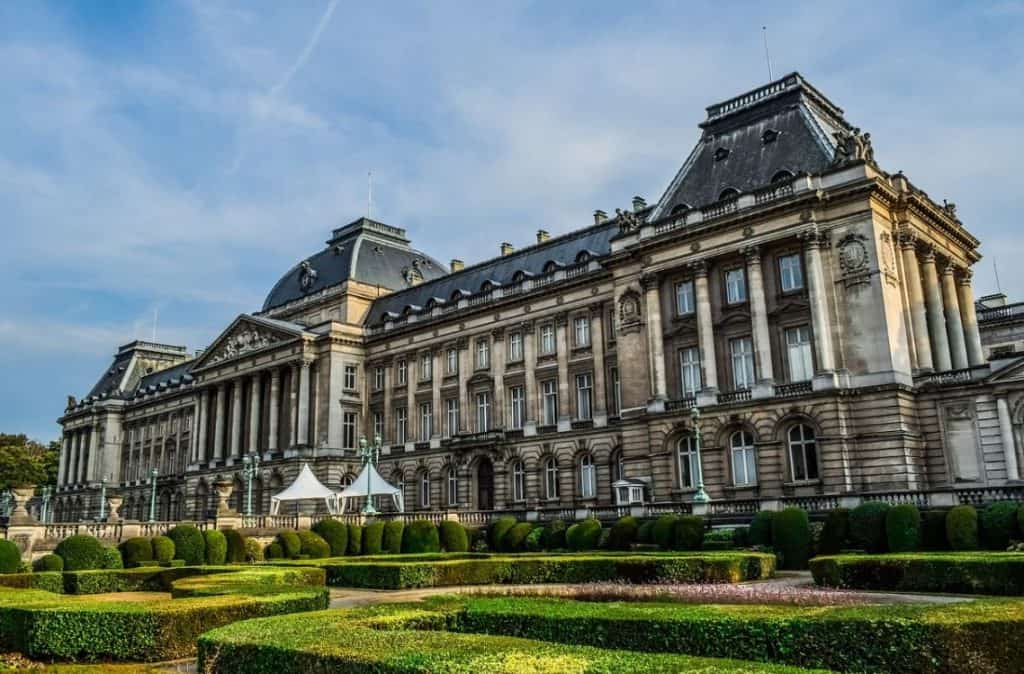
7. Parc du Cinquantenaire
The Parc du Cinquantenaire is also known as the “Jubelpark” and is a large urban park that covers a total area of 30 hectares (74 acres).
It’s situated in the easternmost part of the European Quarter in the center of the city.
The centerpiece of the park is a U-shaped arcade that features a monumental arch called the Cinquantenaire Arch.
The majority of the buildings were built in honor of the 1880 National Exhibition in celebration of the 50th anniversary of Belgian independence.
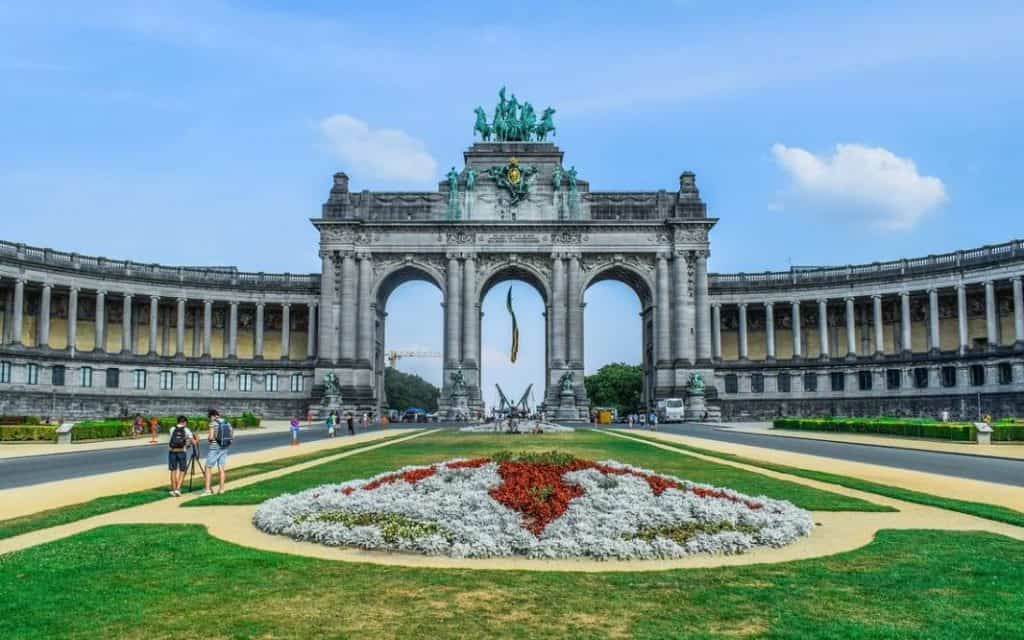
8. National Basilica of the Sacred Heart
The National Basilica of the Sacred Heart is one of the most remarkable churches in Brussels and was dedicated to the Sacred Heart.
This was inspired by the Basilique du Sacré-Coeur in Paris. It was built right on top of “Koekelberg Hill” in the western part of the city.
The first stone of the church was laid in the year 1905 but its construction wasn’t completed until the year 1969 following a delay caused by World War II.
It features a magnificent dome that stands 89 meters (292 feet) tall and which is visible from multiple parts of the city.
Official website: National Basilica of the Sacred Heart
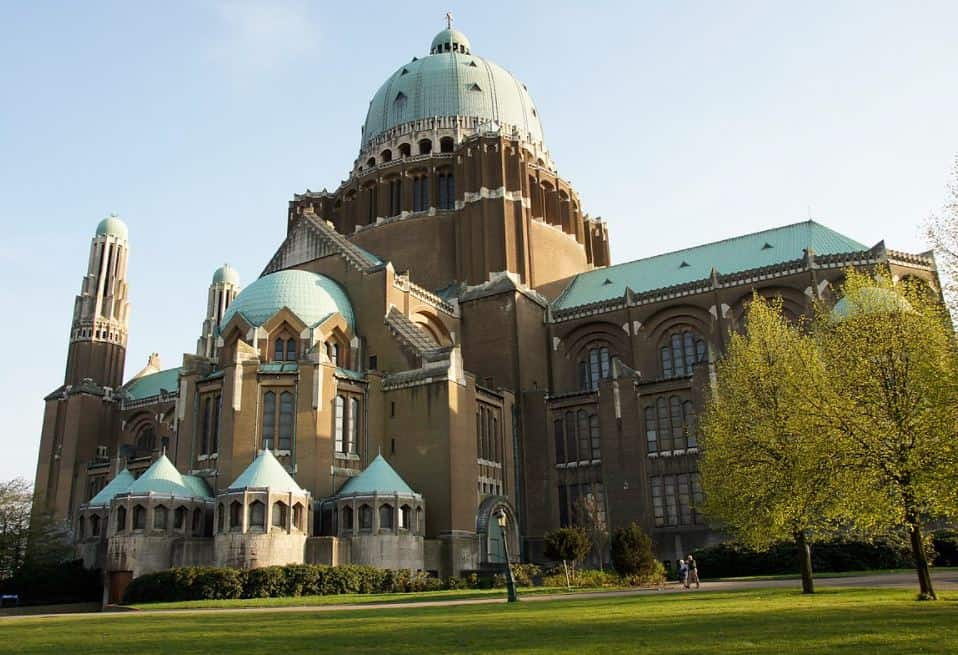
9. Le Botanique
Le Botanique is one of the most fascinating concert venues in Europe, mainly because it’s located within a botanical glasshouse that was repurposed as a cultural center.
This building was originally the Orangerie of the National Botanical Garden of Belgium but moved outside of Brussels to Meise in 1958.
The current concert venue opened its doors in 1984 with most of the concerts taking place in the 650-capacity Orangerie.
Official website: Botanique
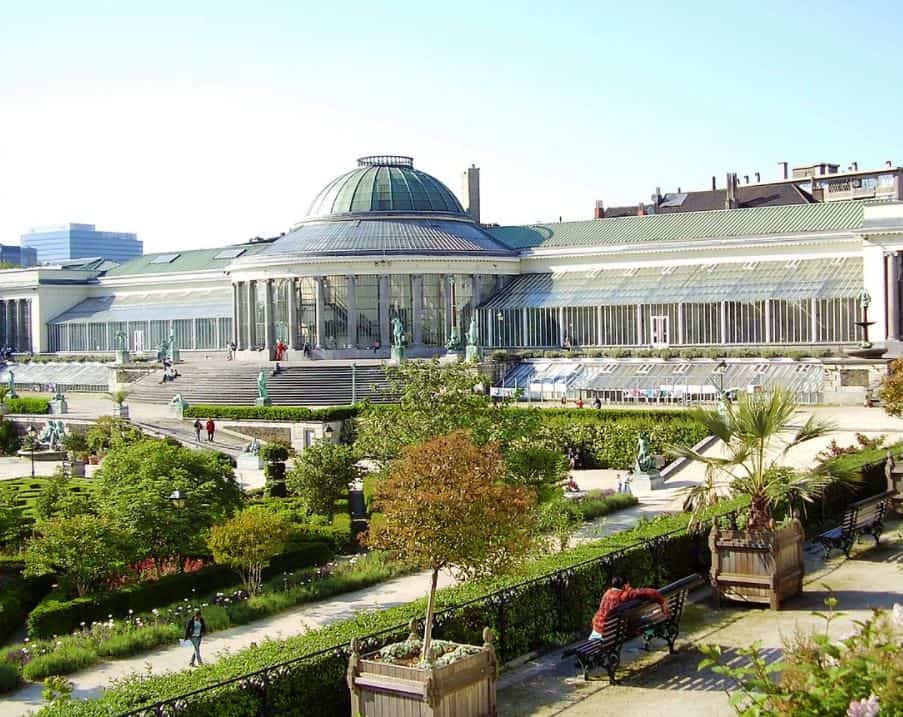
10. Cathedral of St. Michael and St. Gudula
The Cathedral of St. Michael and St. Gudula is another fantastic historic building in the city of Brussels.
It’s dedicated to the patron saints of the city and was constructed between 1047 and 1519.
This fascinating Gothic Cathedral is considered to be the epitome of the Brabantine Gothic architectural style, even though it has been modified quite a bit in the following centuries.
It received cathedral status only in the year 1962 and is one of the most popular tourist attractions in Brussels today.
Official website: Brussels Cathedral
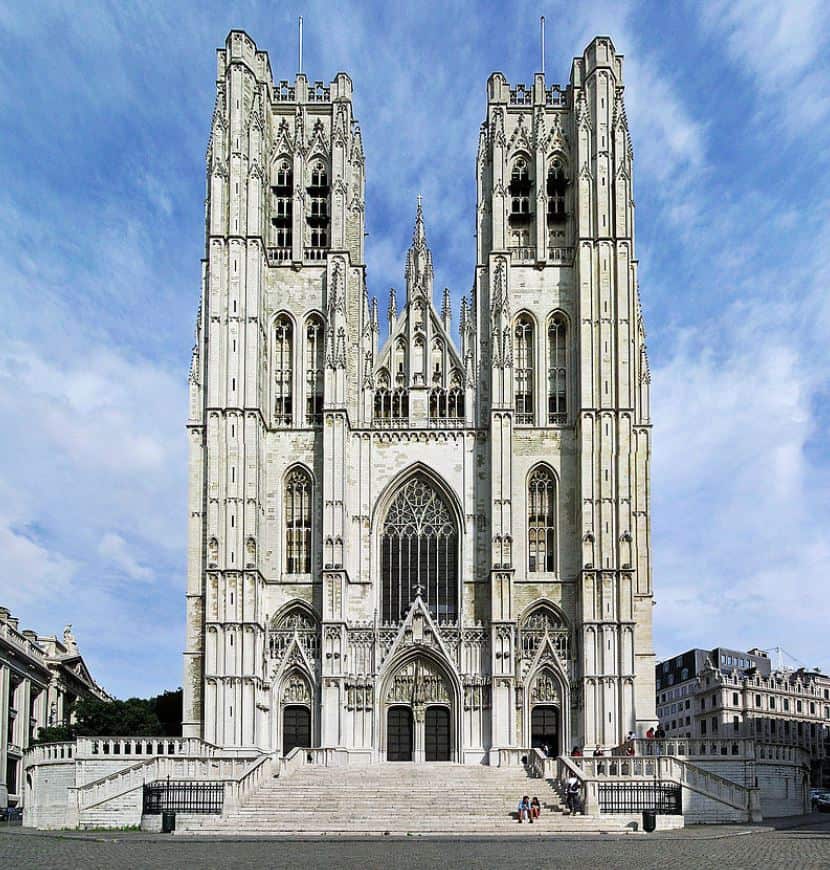
11. Mont des Arts
The Mont des Arts or Kunstberg literally translates to “the hill of the arts” and is a cultural site in the center of the city.
The area provides great views of the city because it’s situated on a little hill, making it the perfect place to take pictures.
The cultural center features a public garden and various famous buildings in Brussels that you can visit.
These include the Royal Library of Belgium, the National Archives of Belgium, and a convention center named the Square – Brussels Meeting Centre.
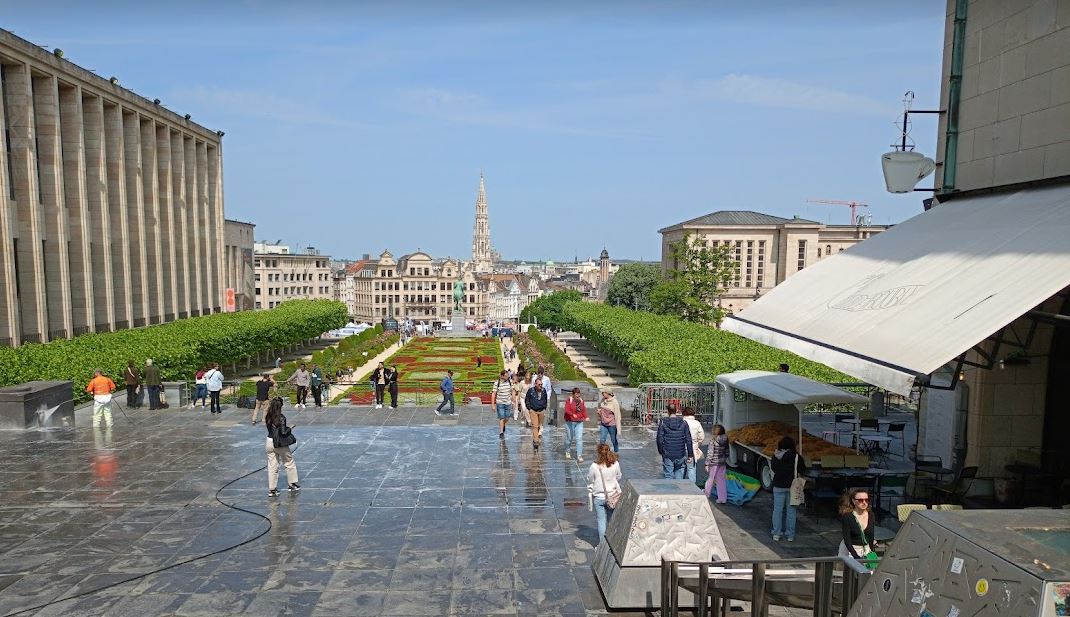
12. Horta Museum
The Horta Museum is a museum dedicated to the man who is considered to be the founder of the Art Nouveau movement, Victor Horta.
Here you can see where he worked as it’s located in the former workshop of the artist, as well as his private residence in the city.
He was one of the first Art Nouveau artists and even though he moved away from this architectural style in his later years, he put his mark on the city of Brussels with the design of various famous buildings.
Official website: Horta Museum
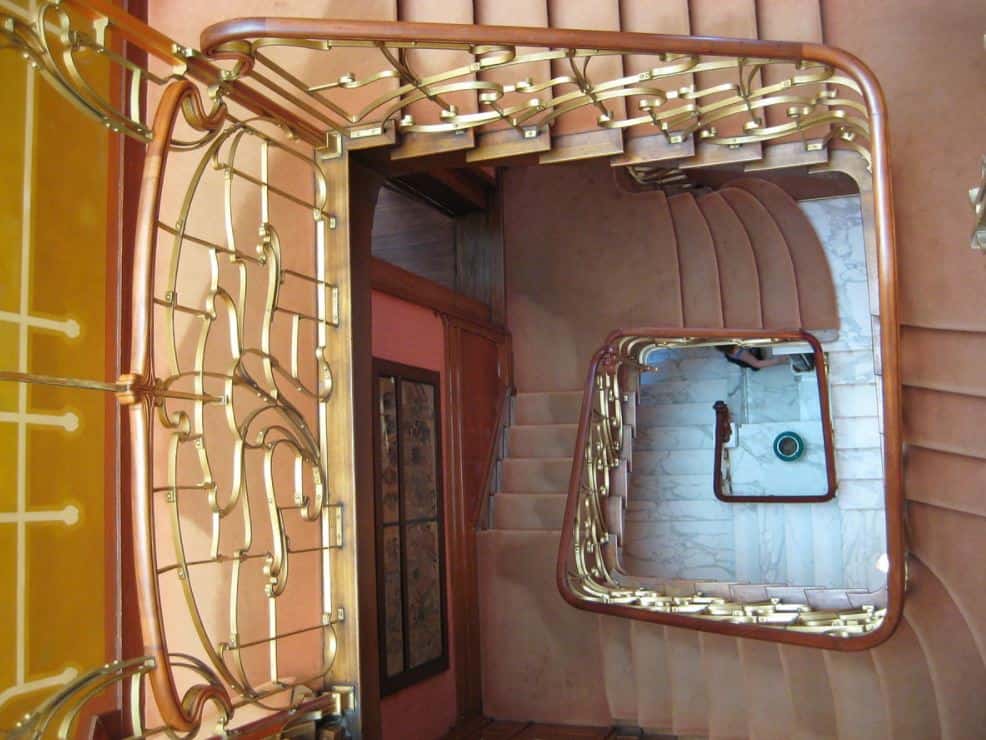
13. Place Royale
The Place Royale or Koningsplein is another monumental square in the center of Brussels.
It dates back to the Neoclassical period and was built between 1775 and 1785, something that reflects in the architecture of the building flanking it.
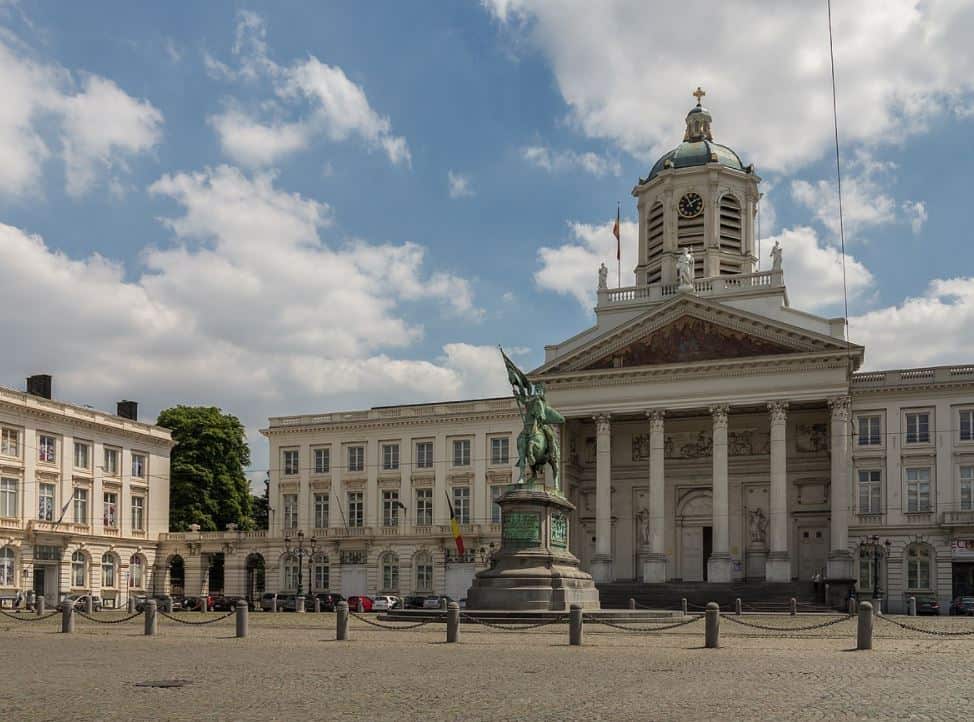
The square has the ideal classical proportions and has the shape of a rectangle. It was part of a larger urban plan which also included the nearby Brussel’s Park near the Royal Palace, which is how the square got its name.
The buildings situated on this square are some of the most famous museums in the city.
14. Berlaymont Building
The Berlaymont building is one of the most important buildings in Europe because it houses the headquarters of the European Commission, the executive branch of the European Union.
The building was constructed between 1963 and 1969 and is the centerpiece of the European Quarter in Brussels.
Its unique design and shape are also reflected in the logo of the European Commission
There’s a visitor center in which you can learn everything about the history of the European Union as well.
Official website: Le Berlaymont

15. Halle Gate
The Halle Gate or Porte de Halle / Hallepoort is a medieval fortified city gate that was built as a part of the second walls of Brussels.
The first fortified walls surrounding the city were completed in the early 13th century while the second walls were finished in the late 14th century.
The gate was completed in the year 1381 and was originally named the “Obbrussel Gate” or “Upper Brussels Gate” about its location.
It was renamed Halle gate about the city it faces, Halle, just outside of Brussels.
It now houses a museum which is part of the Royal Museums of Art and History.
Official website: Halle Gate
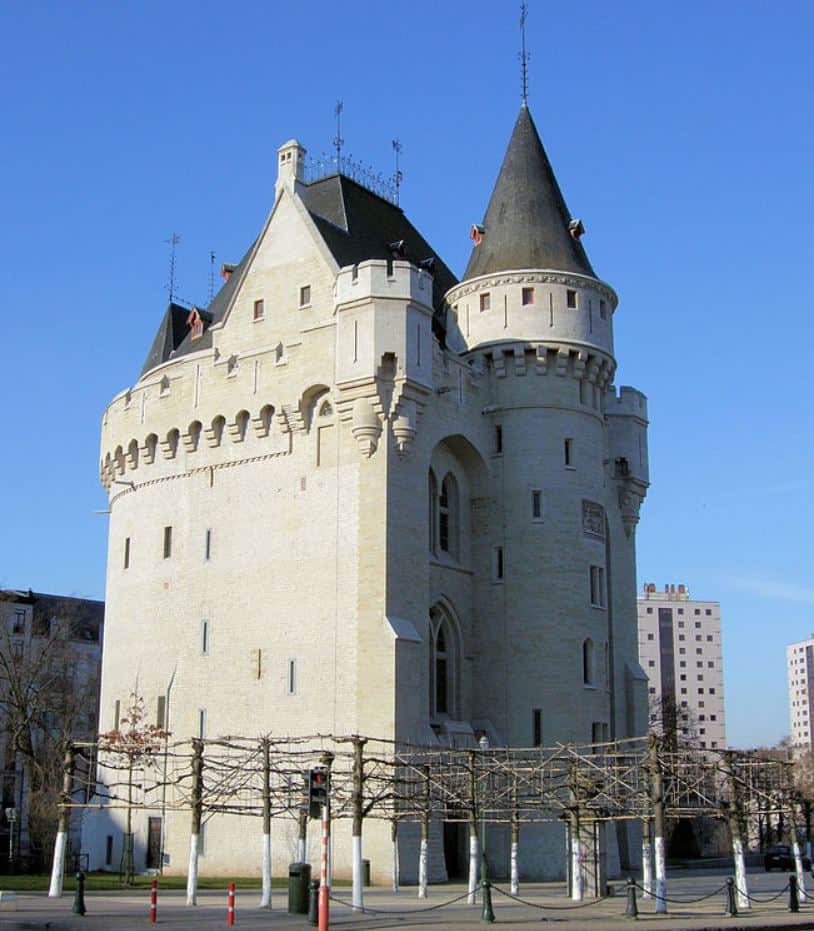
16. Law Courts of Brussels
The Law Court of Brussels is one of the most monumental landmarks in the city.
It was constructed in the late 19th century between 1866 and 1883 in the eclectic architectural style, which means a combination of styles mixed.
It’s one of the most famous landmarks in Brussels because it’s considered to be the largest building constructed in the 19th century, a pretty astonishing record.
It has a diameter of 160 × 150 meters (520 × 490 feet) and a height of 104 meters (341 feet).
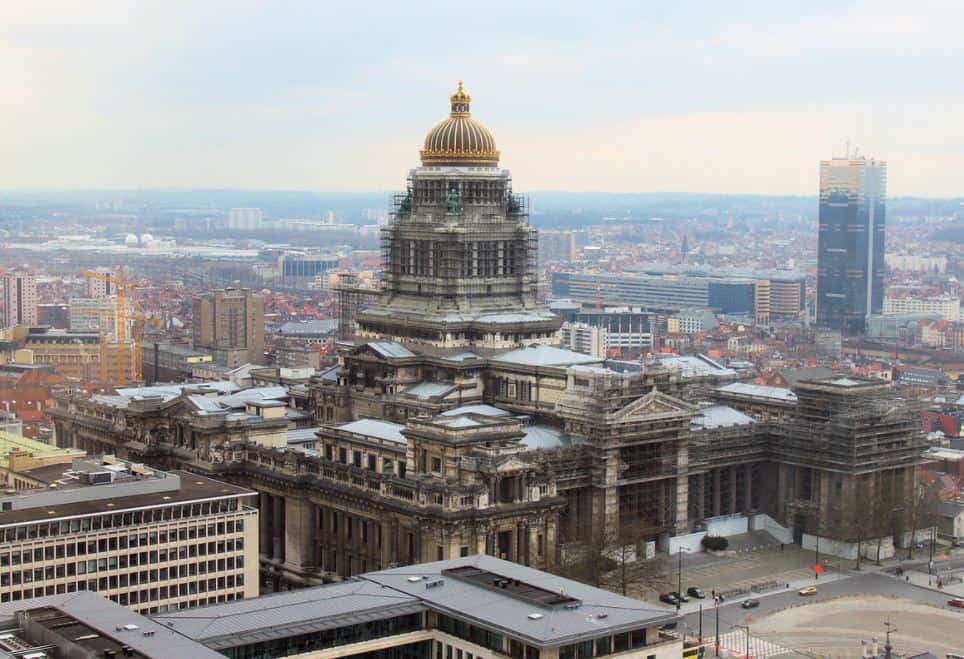
17. Hôtel Solvay
The Hôtel Solvay is a large house located in one of the main thoroughfares in Brussels called the Avenue Louise/Louizalaan.
It was designed by Art Nouveau artist Victor Horta for Armand Solvay, the son of wealthy industrialist Ernest Solvay.
This means that the house and its contents not only feature a remarkable architectural design, but also the most expensive use of materials.
This late 19th-century UNESCO World Heritage site is still private property and has remained in the exact state as when it was completed.
Official website: Hôtel Solvay

18. Royal Museums of Fine Arts of Belgium
The Royal Museums of Fine Arts of Belgium was originally established by Napoleon Bonaparte in 1801 and the first branch opened its doors in the year 1803.
Following the Independence of Belgium, ownership was transferred to the city of Brussels and the Belgian State in 1845.
The collection of museums is located in the Royal District of the city of Brussels on the Coudenberg, and consists of 6 different museums (2 located in the man building) containing fine art of Belgian artists.
These museums are the “Oldmasters Museum,” the “Magritte Museum,” the “Fin-de-Siècle Museum,” the “Wiertz Museum,” and the “Meunier Museum.”
Official website: Royal Museums of Fine Arts of Belgium

19. La Monnaie
La Monnaie is officially known as the “Royal Theatre of La Monnaie” and is the most famous opera house in Belgium.
The federal institution of the “National Opera of Belgium” uses the building and receives funding from the Belgian Government as well.
The current building on the site is the third theater that was built here. The façade of the structure is the oldest part and was completed in 1818.
The magnificent auditorium dates back to the year 1856. This famous landmark in Brussels underwent a thorough renovation in the 1980s.
Official website: La Monnaie

20. Parlamentarium
The Parlamentarium is located in the “Espace Léopold” or “Leopoldruimte,” a complex part of the European Parliament in the European Quarter of Brussels.
It’s the official visitor center of the European Parliament in the city.
In this building, you can learn the entire history of the European Union and its institutions and this is done through an exhibition in a multimedia format.
The center opened in 2011 and the entrance is located on the “Esplanade of the European Parliament,” a large public space.
Official website: Parlementarium

21. Tour du Midi
The Tour du Midi or the “Zuidtoren” is the most impressive skyscraper in Brussels, and also the tallest one in the city and all of Belgium.
Its name literally means “South Tower” and that’s because it’s located right across from the Brussels South Railway Station.
The skyscraper features 38 stories and stands 148 meters (486 feet) tall. What’s remarkable is that it was built between 1962 and 1967.
Back then, it was the tallest structure in the European Economic Community (the EU today) until it was surpassed by the Tour Montparnasse in Paris.

22. Cauchie House
The Cauchie House is another remarkable Art Nouveau townhouse that was built by Art Nouveau architect Paul Cauchie.
It’s situated in Etterbeek, one of the 19 municipalities of Brussels located just east of the center of the city.
This 1905 house is just a short distance away from Cinquantenaire Park and it’s a remarkable sight in a row of pretty random houses.
It intertwines various forms of art to become a complete ensemble, something that turned the house into a work of art by itself.
Official website: The Cauchie House
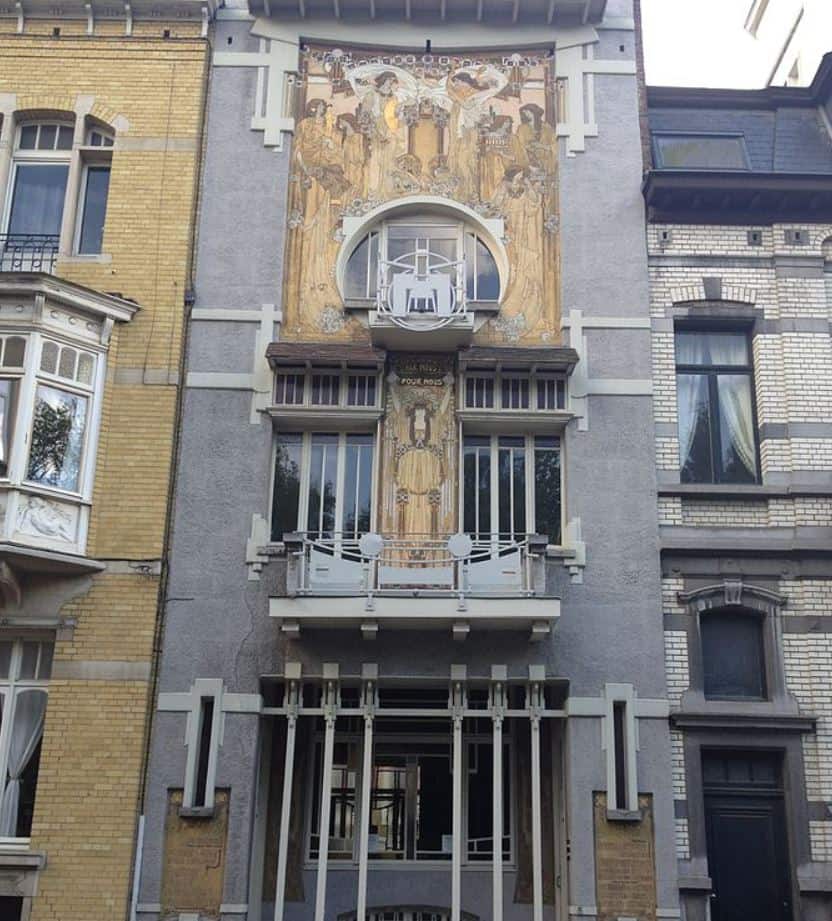
23. Finance Tower
The Finance Tower is another remarkable skyscraper in the Northern Quarter of the city, also known as Brussels’ Central Business District.
Its roof is just slightly shorter than that of the Tour du Midi as it has 36 floors and stands 145 meters (476 feet) tall.
Apart from being the second-tallest building in Belgium, it holds the record of featuring the most floor space of any building in Belgium with 220,000 square meters (2,400,000 square feet).
To give some reference, that’s more than for example the Empire State Building in New York City which only has 208,879 square meters (2,248,355 square feet) of floor space but is more than twice as tall.
Official website: Finance Tower
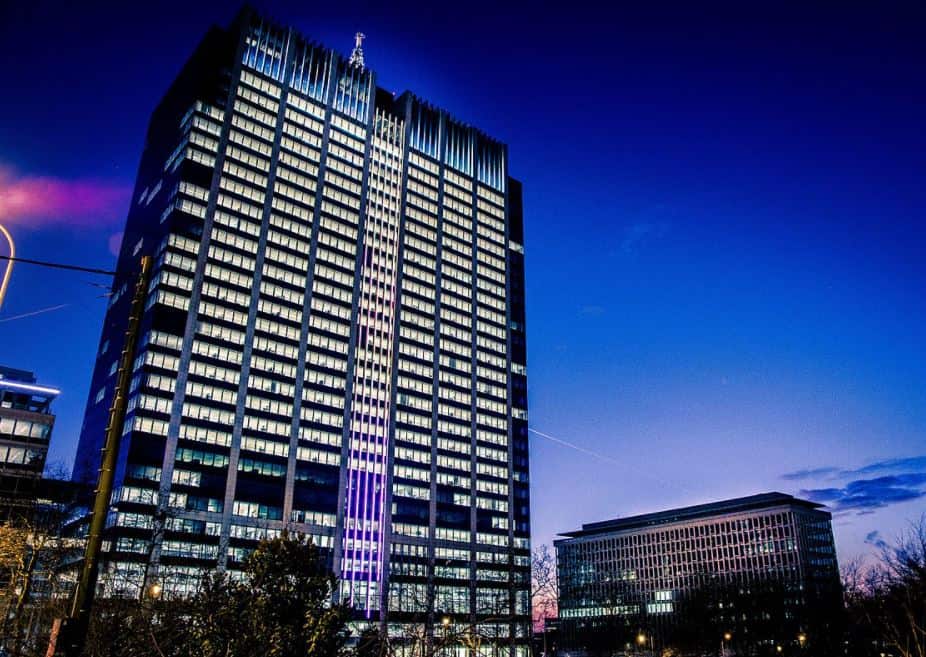
24. The Church of St. James on Coudenberg
The Church of St. James on Coudenberg is a Roman Catholic church and another Neoclassical building located on Place Royale in central Brussels (where multiple museums are located).
It’s the centerpiece of the square and was built between 1776 and 1849.
There used to be a medieval abbey on the site before which was demolished on command of the Austrian Charles Alexander of Lorraine (1712-1780).
He was the Governor of the Austrian Netherlands and remarkably also the man who also laid the first stone of the building in 1776.
Leopold I, the first King of the Belgians, took his oath on the steps in front of this church on July 21, 1831, making it one of the most important structures in Belgium.
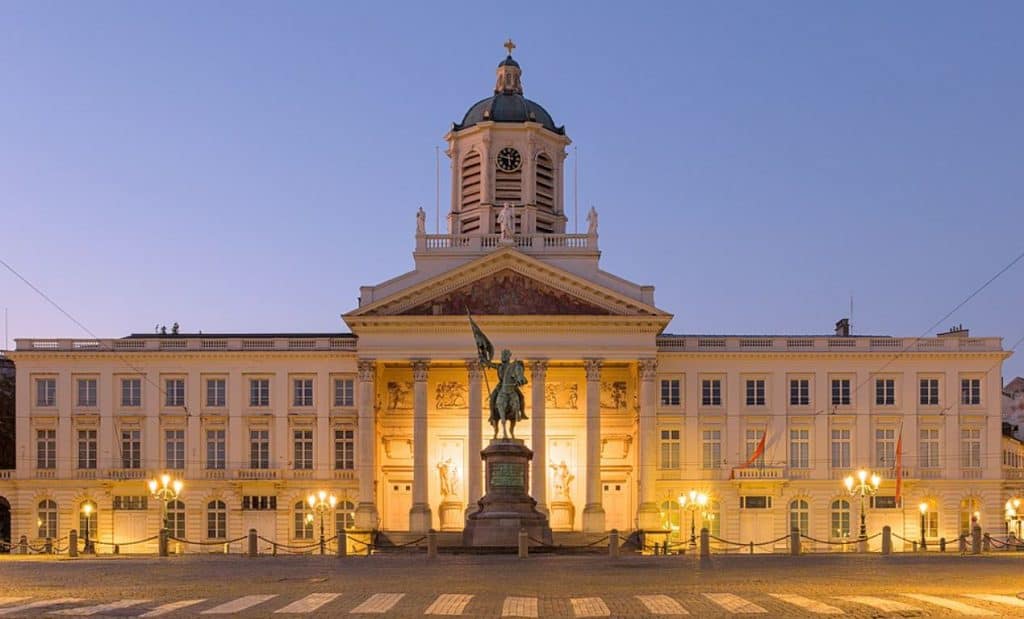
25. Royal Saint-Hubert Galleries
The Royal Saint-Hubert Galleries are a collection of fascinating glazed shopping arcades in the heart of the city.
The idea behind its design was based on the street-like courtyard of the Uffizi Gallery in Florence, Italy, which features twin façades as well.

They were built between 1846 and 1847, which means that they are quite a bit older than equally famous structures
Some of these are the Galleria Vittorio Emanuele II in Milan, Italy, and The Passage in Saint Petersburg, Russia.
Official website: Royal Saint-Hubert Galleries


